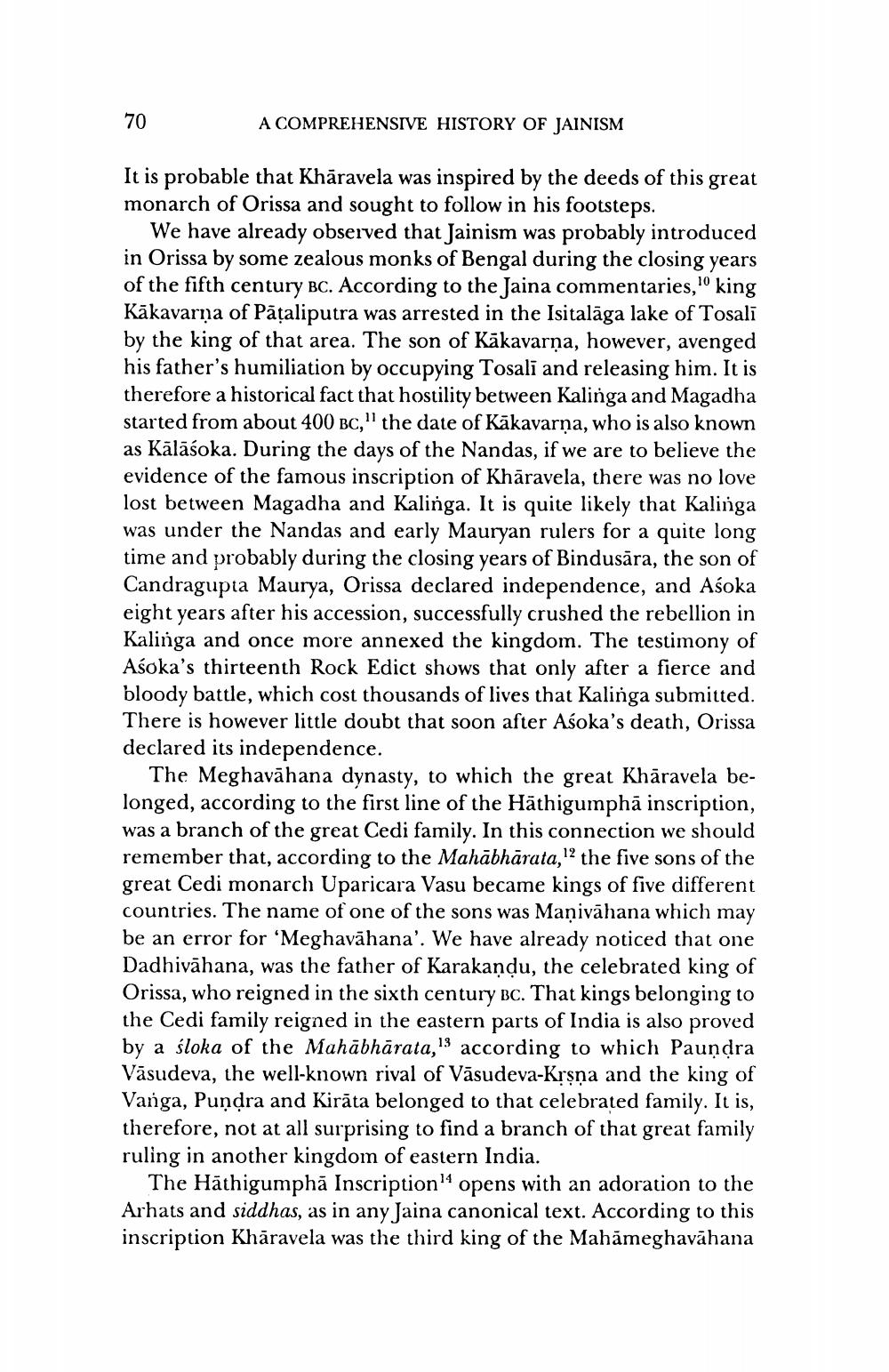________________
70
A COMPREHENSIVE HISTORY OF JAINISM
It is probable that Khāravela was inspired by the deeds of this great monarch of Orissa and sought to follow in his footsteps.
We have already observed that Jainism was probably introduced in Orissa by some zealous monks of Bengal during the closing years of the fifth century BC. According to the Jaina commentaries,10 king Kākavarṇa of Pāțaliputra was arrested in the Isitalaga lake of Tosali by the king of that area. The son of Kakavarṇa, however, avenged his father's humiliation by occupying Tosali and releasing him. It is therefore a historical fact that hostility between Kalinga and Magadha started from about 400 BC," the date of Kākavarṇa, who is also known as Kālāśoka. During the days of the Nandas, if we are to believe the evidence of the famous inscription of Kharavela, there was no love lost between Magadha and Kalinga. It is quite likely that Kalinga was under the Nandas and early Mauryan rulers for a quite long time and probably during the closing years of Bindusara, the son of Candragupta Maurya, Orissa declared independence, and Aśoka eight years after his accession, successfully crushed the rebellion in Kalinga and once more annexed the kingdom. The testimony of Aśoka's thirteenth Rock Edict shows that only after a fierce and bloody battle, which cost thousands of lives that Kalinga submitted. There is however little doubt that soon after Aśoka's death, Orissa declared its independence.
The Meghavahana dynasty, to which the great Khāravela belonged, according to the first line of the Häthigumpha inscription, was a branch of the great Cedi family. In this connection we should remember that, according to the Mahabharata,12 the five sons of the great Cedi monarch Uparicara Vasu became kings of five different countries. The name of one of the sons was Manivahana which may be an error for 'Meghavahana'. We have already noticed that one Dadhivahana, was the father of Karakaṇḍu, the celebrated king of Orissa, who reigned in the sixth century BC. That kings belonging to the Cedi family reigned in the eastern parts of India is also proved by a sloka of the Mahabharata,13 according to which Paundra Vasudeva, the well-known rival of Vasudeva-Kṛṣṇa and the king of Vanga, Pundra and Kirāta belonged to that celebrated family. It is, therefore, not at all surprising to find a branch of that great family ruling in another kingdom of eastern India.
The Häthigumpha Inscription14 opens with an adoration to the Arhats and siddhas, as in any Jaina canonical text. According to this inscription Khāravela was the third king of the Mahāmeghavāhana




